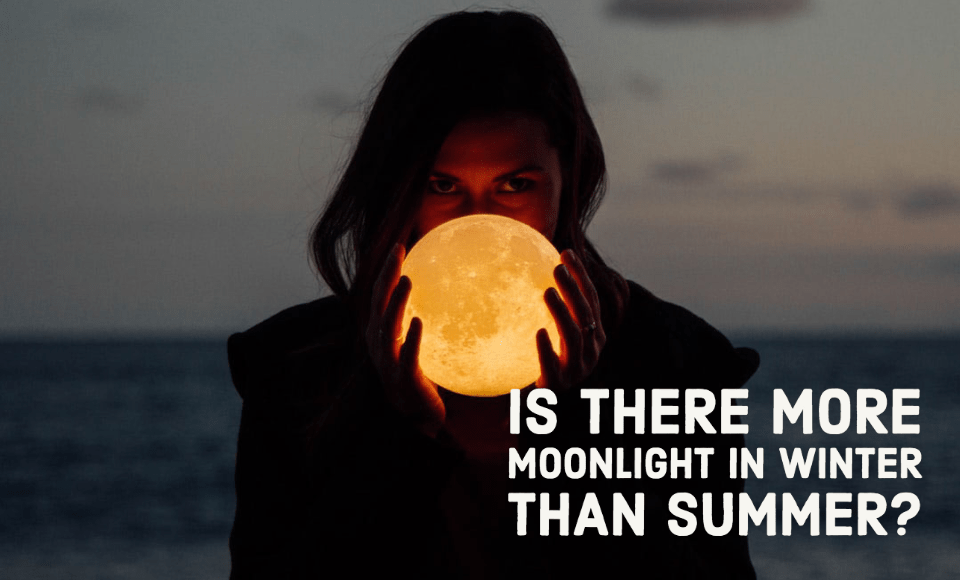It brings happiness, especially to kids at night, when the darkness fills the sky, its light shines brightly at its fullest. The Moon is indeed one significant body to the Earth’s existence and all its living. Thanks that we have one!
There are many reasons as to the Moon’s significance. In India, it is worshipped as a god, and there are a lot of stories about it in the Hindu religion. It is also the nearest celestial body to the Earth where humans have walked on.
Our Moon is called “the Moon” back in the past because people didn’t know that other moons also existed. Until 1610, when Galileo Galilei discovered that Jupiter had four moons orbiting the planet. And now, it has 79 moons: 53 named, and 26 waiting official names.
The Earth’s Moon is the fifth-largest natural satellite in the Solar System. Many people admired how beautiful it looks in the night sky. Some have thought that it could just be a massive piece of rock that orbits the Earth. But have you wondered how moonlight is produced?
It might be a piece of new knowledge to you, but the Moon does not produce its light; instead, it’s a reflection of the Sun’s light.
The appearance of the Moon varies from one night to the next. There are changes on Earth that can be associated with the Moon, and one of them is the changing of the season. That is why many cultures have seasonal names related to the Moon, such as “the harvest moon,” “the frost moon,” “the flower moon,” and etcetera. It seems that there is more moonlight in wintertime than the summertime. Does the Moon indeed affect seasons?
Rotation vs. Revolution
The Earth is separated into two halves by an imaginary line called the equator. Northern Hemisphere is the half of the Earth between the equator and the north pole, while the other half between the south pole and the equator is called the southern hemisphere.
Another imaginary line runs through the Earth from the north pole to the south pole; it’s the Earth’s axis. The Earth rotates on its axis. It completes a counterclockwise rotation every 24 hours. That is why the Sun rises in the eastside and sets in the westside. However, the rotation has nothing to do with the changing seasons. The Earth’s revolution around the Sun happens only once every 365 1/4 days, and when combined with the Earth’s tilt, it causes seasonal changes.
In June, the Northern Hemisphere inclines towards the Sun; therefore, it experiences more day time than night time. Meanwhile, the southern hemisphere experiences more night time than day time because it is pointing away from the Sun.
The northern hemisphere is not always pointed towards the Sun because it takes one year for the Earth to complete one full revolution. In December, the northern hemisphere points away from the Sun and experiences wintertime. It is the time of late dawns, early sunsets, short days, and long nights. It is also known as December solstice or winter solstice when the Sun reaches its southernmost point in the sky.
If it is the winter solstice in the Northern Hemisphere, the Southern Hemisphere experiences summer solstice, and vice versa.
More moonlight in winter?
The reason why we receive more moonlight during winter is mainly that the Earth’s axis inclines towards the full Moon. So in winter, we will see the Full Moon around the area in the sky where the Sun was in summer. Sun during summer is high above the horizon, and Full Moon will take its place during winter, thus giving us more moonlight.
Northern places like Scandinavia, Northern Canada, Alaska, Norway, Sweden, and Finland are called lands of the midnight Sun. These countries contain land within the Arctic Circle, where there is midnight sun in midsummer.
The Moon’s Influence
The Earth’s angle, which is tilted at 23.5 degrees from the ecliptic, is responsible for the seasons. But the tilt angle is not fixed. The Moon’s gravitational pull on the Earth causes precession or a small, 21,000-year cyclic change in the angle of the Earth’s tilt.
The absence of the Moon’s pull, precession would be even slower, but it would be more extensive. More significant precession means a more remarkable change in the tilt of the Earth’s axis, which means that the seasons’ nature would change.
